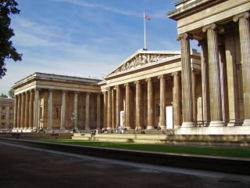
The British Museum in London, UK
Faith, Narrative and Desire: Masterpieces of Indian painting in the British Museum
Celebrating 60 years of Indian Independence
]]>
This summer the British Museum will display a selection from its outstanding collection of Indian paintings to celebrate the 60th anniversary of Indian Independence (15 August). Around fifty works dating from the late seventeenth to the early twentieth century will give an insight into the great beauty and variety of Indian painting. Gifts and recent acquisitions will be a particular feature of the exhibition.
Displayed to the public for the first time, will be a group of South Indian paintings selected from a large group acquired by the Museum in April. They are executed in the ‘Company style’ (painted by Indian artists for European patrons) and date to about 1820. In brilliant colour they depict the gods and goddesses of the Tamil country and are witness to the then growing European interest in classification – not only of flora and fauna – but also of Hindu deities. These paintings demonstrate the Enlightenment desire to grapple with the new and complex culture that Europeans encountered in the subcontinent, and then attempted to order by depiction. Each deity is painted in an extremely fine hand on laid European paper and burnished with gold leaf and is draped in exquisite fabrics, the very textiles that helped establish the trading links between India and Britain.
Also in the exhibition will be paintings illustrating the different regional traditions of Indian painting from the seventeenth-early twentieth centuries. Amongst these will be paintings of the type known as Barahmasa which illustrate the seasons and the emotions that are connected with them. In one of these paintings, ‘The Month of Bhadon’, monsoon clouds gather in darkening skies as lovers sit on a terrace; the moment is heavy with expectation. After the rains, the gardens beneath are verdant and lush and a trio of young elephants are seen playing in a lake in the foreground. These paintings of the seasons are used as metaphors for emotion – for Indian painting is all about the landscape of the imagination. The intimate scale of these courtly paintings is a rich and intimate feast for the eye and these characteristics contrast with the broad, vigorous colours of a group of story-telling paintings from the southern Deccan that are also on display. These are of the type known as Paithan and have recently been generously donated to the Museum and are dramatic and stylized pictures, of brilliant colour. They were used by rural story-tellers who accompanied their narration with these extraordinary paintings. Favourite subjects are the narratives of the Mahabharata and scenes from the Story of Harishchandra. Yet other traditions to be displayed show examples of the so-called Ragamala paintings which link musical melody with the time of day and the types of emotional response associated with that time. Examples on show are from 18th century Rajasthan.
Follow us on:

